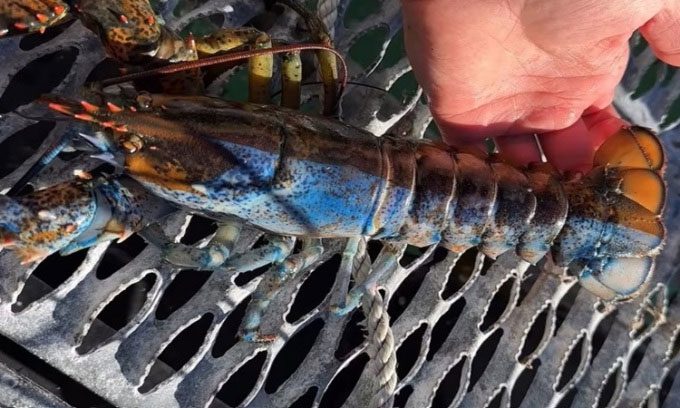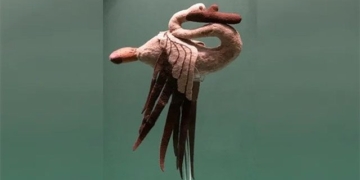A Rare Lobster with Unique Two-Toned Body Discovered in Maine with Opposite Sex Characteristics

The Bowie lobster attracts significant attention on social media. (Photo: Jacob Knowles)
Jacob Knowles, a lobster fisherman in Maine, shared images of a strange lobster that is half blue and half orange-brown on Instagram in mid-November. The two halves of the lobster, named Bowie, also exhibit opposite sex characteristics, according to Mail. Bowie displays gynandromorphism, possessing reproductive organs of both male and female. This type of mutation occurs during the earliest stages of embryonic development when animal cells first divide within the egg.
Knowles identified Bowie as a hermaphrodite due to the small swimmerets at the tail base. The male’s swimmerets are quite rigid, while the female’s are more flexible, covered with fine hair to hold eggs during reproduction. This hermaphroditic characteristic has been observed in fossilized crustaceans, including lobsters, dating back 70 million years and seemingly arises from genetic errors.
Some crustacean species can possess complete reproductive organs of both male and female or can change from one sex to another during their lifetime. However, lobsters are not among these species. Male and female lobsters have distinct physical features. In addition to the swimmerets, females also have a wider tail to hold their egg clutch underneath. Being crustaceans, scientists suspect they are more likely to exhibit hermaphroditism early in their developmental stages.
In a study conducted in 2012, scientists speculated that environmental endocrine disruptors stemming from human pollution might make hermaphroditism more common in lobsters. According to data from the University of Maine at Orono, this phenomenon occurs in 1 out of every 50 million lobsters. Knowles kept Bowie in a cage at the harbor, but after last week’s storm, he decided to donate it to scientists at the Bar Harbor Aquarium in Maine, where it will be safer.


















































